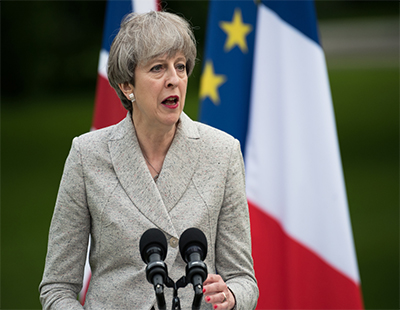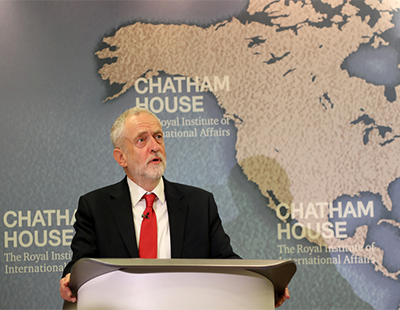She then set out more specific pledges in subsequent key speeches and events, beginning with her Conservative party’s ill-fated 2017 General Election manifesto:
• to deliver a million homes by 2020 (so three years from the election);
• to build “better housing” to match the quality of previous generations;
• to build 160,000 homes on government land;
• to simplify, speed up and make more transparent the house buying process;
• £2 billion towards affordable housing;
• to clamp down on what were described as abuses in the private rental sector.
Then last year, at speeches to the National Housing Federation and to the Tory party conference, she set out more specifics:
• scrapping caps on councils’ borrowings against housing revenue account assets;
• a further £2 billion towards housing associations building “low cost homes”.
With under three years in power (assuming she leaves office soon) and thanks to a pre-occupation with Brexit, it may seem unfair to judge her delivery against her promises - but that’s the key way we measure our politicians, so here goes.
House Building: Independent research by consultancy McBains found that fewer than half the 400 house builders it polled felt May’s target of 300,000 homes a year (required to meet the million-homes-by-2020 goal) was achievable. The biggest obstacles were land availability, slow planning processes and ad hoc skills shortages worsened (even before Brexit) by a reduced volume of EU-born workers.
A Knight Frank survey of builders found that one per cent - yes, just one per cent - felt it possible to surpass the 300,000 new homes target a year by 2022.
And whilst house building starts have increased significantly in recent years the total remains - according to Full Fact - below the 2007/2008 pre-recession peak of 200,000 annually.
Meanwhile Right To Buy has remained in force in England (the one part of the UK under the direct determination of the May government), continuing to erode stock levels while the policy has been scrapped in both Scotland and Wales.
It’s hardly a transformative picture for our housing stock.
Simplifying House Buying: If Theresa May wants a legacy other than the Brexit farce, then this perhaps should be it.
The Ministry of Housing, Communities and Local Government has made solid progress on a raft of proposals to reduce the damage of leasehold, promoting digitisation, seeking to reduce duplication in the current process, and giving greater transparency to buyers and sellers. If (the big If) May holds on to office until the summer, she will have presided over the publication of solid proposals on reservation agreements, estate agency training and qualifications, and possible ‘log books’ for homes.
But is it her work? Much of it seems to be down to the skilled MHCLG civil servants rather than May herself or the revolving doors she has played with Housing Ministers.
Since she’s been Prime Minister she has appointed Gavin Barwell, Alok Sharma and Kit Malthouse as ministers with primary responsibility for housing - would you, dear reader, say any of these has made a significant impact? In the middle of that cast list, briefly, was Dominic Raab whose enthusiasm for the post appeared distinctly lacking and who arguably marked a new low for the importance given to housing by May.
Changing the Private Rental Sector: Of course, there has been a welter of new regulations and laws for the PRS since May became PM - but is the sector any better prepared now to provide housing for a growing population unable to afford to buy and under-served by the current supply of new homes? Are more landlords likely to enter the sector to make up a shortfall?
Whether we like it or not the Fees Ban was a 2017 Conservative manifesto commitment, personally endorsed by May at a Cabinet meeting six months before the last General Election; likewise, other one-off measures, such as mandatory CMP, have undoubtedly improved the sector’s image - and that was sorely needed.
But other initiatives, such as the MHCLG’s pledge to make Ombudsman membership mandatory for landlords - still in the pipeline - smack of publicity-seeking rather than well-thought-out policy.
If May wants any credit for rental reform, it will be a big ask given that her PRS policy with the biggest impact has been Right To Rent, in the news for all the wrong reasons.
This policy was personally-endorsed and pioneered during May’s days as Home Secretary and its impact (widely regarded as discriminatory and hugely bureaucratic) will haunt any housing legacy May could claim.
Planning: The Prime Minister has said all the right things about reforming the National Planning Policy Framework, but as yet few actual measures have seen the light of day.
If 10 per cent of homes on major sites are to be truly affordable, councils obliged to adopt nationwide standards for housing, and infrastructure requirements to be considered at an early stage of all housing schemes - as promised by May as she announced the NPPF consultation last year - she will be rightly praised.
However as yet we have few signs of progress.
Instead there are bad news stories which the government has been slow to deal with - Persimmon bonuses, leasehold mis-selling, accusations of land-banking by developers, the continuing evidence of poor-quality planning work by local councils, and so on and so on.
One of the few areas where progress was made rapidly was in the proliferation of Permitted Development Rights: they have created more residential space, but with serious question marks over their quality. This was a quick-fix, applied too quickly.
When a government’s planning policy is attacked by the free-market Institute for Economic Affairs (which says it’s “tinkering at the edges”) and the left-leaning Joseph Rowntree Federation (accusing May of “overlooking entirely the role central government must play”) you get a sense of how deficient her approach has been.
Are we being unfair to a Prime Minister dealt a poor hand by her predecessor’s EU Referendum mess? Is it unjust to blame a Prime Minister for a poor performance when her sorely divided Parliament has shackled decision-making?
Personally, I think not: May ran for the job of Prime Minister within days of the Referendum result, and she called an unnecessary snap election in 2017. If she wants the credit when things go right, she should take the flak when things go wrong.
And talking of wrong, can anyone say the housing market and industry are in better shape now than when May took office?
Politics is a rough game, and May has been found wanting. Her contribution to solving housing problems has been negligible to date, and in a just world it would be this that would be driving her from office, not the result of a vote almost three years ago.
But whatever the cause, she looks like she’s going: to paraphrase her own characteristically glib sound bite from 2016, for Theresa May “Brexit means Exit.”
*Editor of Estate Agent Today and Letting Agent Today, Graham can be found tweeting all things property @PropertyJourn

















%20A%20property%20tale%20for%20our%20times.png)







Join the conversation
Jump to latest comment and add your reply
Very good analysis of the rule of a good for nothing PM!
Please login to comment